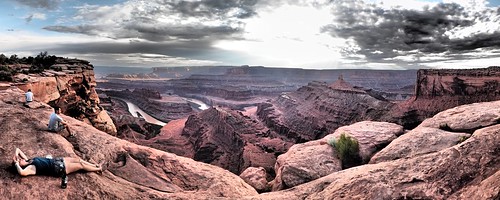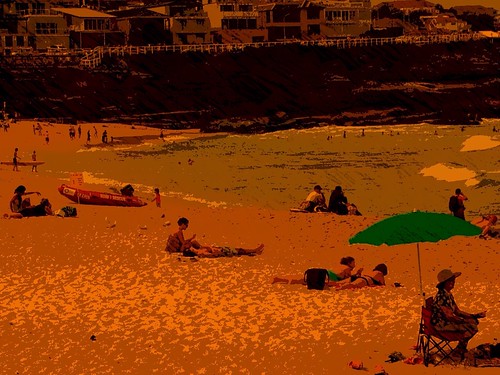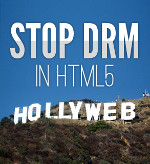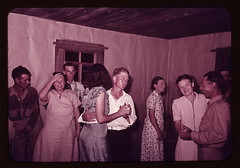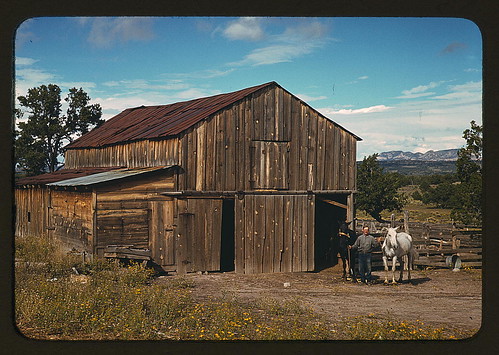Friday, November 15, 2013
Wednesday, November 13, 2013
Thursday, November 7, 2013
"40 years on: how Gough Whitlam gave Indigenous art a boost"
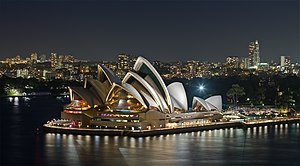 |
| English: A exposure blended photo of the Sydney Opera House, as viewed from the Sydney Harbour Bridge. Taken by myself with a Canon 5D and 100mm f/2.8 macro lens. Français : L’Opéra de Sydney, vu depuis le Harbour Bridge. Suomi: Sydneyn oopperatalo kuvattuna Sydney Harbour Bridge:ltä. Gaeilge: An tÁras Ceoldrámaíochta i Sydney san Astráil. (Photo credit: Wikipedia) |
By Joanna Mendelssohn
As you’ve no doubt noticed, celebrations are underway to mark the 40th anniversary of the Sydney Opera House – and that’s as it should be. But this year marks a few other “40ths” that have had a tremendous impact on Australian culture, and not least on Indigenous art.My favourite research library is located in the basement of the Art Gallery of NSW. It houses catalogues of exhibitions great and small. There are ancient minute books which record squabbles between trustees and press cutting books that date back to the 19th century. Together, these documents offer a multi-layered narrative of every event and attitude vaguely related to art.
My research has taken me back in time to 1973, the first year of Gough Whitlam’s government – and the year the Aboriginal Arts Board was established. The Board was made up of Aboriginal artists, writers and performers. A prime ministerial press statement makes its purpose clear:
The decision to place control for the arts in the hands of Aboriginals is intended to stimulate indigenous Australian arts and lead to the preservation of many art forms almost lost since the settlement of Australia by Europeans.The Queen opened the Opera House in 1973. While the 40th anniversary of Danish architect Jørn Utzon’s magnificent building has been marked by enthusiastic public celebration, there are other events from that compelling time vital to the cultural life of this country that deserve to be commemorated.
The first Biennale of Sydney took place in 1973, a landmark occasion for Australian contemporary art. When Whitlam opened the exhibition, he noted it was his first public event at the Opera House as then NSW premier Sir Robert Askin had refused an invitation to the opening party. Forty years later and the Biennale of Sydney is one of the great festivals for contemporary art and continues to showcase the work of Indigenous artists.

The ongoing success of these two great institutions, the Sydney Opera House and the Biennale, has only been made possible by another innovation of 1973 – the radical restructure of the Australian Council for the Arts (renamed the Australia Council in 1975) and the introduction of significant funding for creative endeavours.
Every art form can claim to have benefited from the new availability of arts funding. Young practitioners could travel overseas to obtain the necessary experience. The new funding pool gave practitioners time to write or make new works, or subsidised international performances and exhibitions.
Easily the greatest impact of the Australia Council, though, has been how it has enabled the transformation of a broader understanding of Australia’s Indigenous culture and – in fostering the achievements of Indigenous artists, writers, musicians, performers and curators – helped reposition Indigenous culture as central to this country’s identity.
Press clippings give some indication of the attitudes of the time. In 1973, prominent art collector, Jim Davidson, gave an interview in which he claimed, “Aboriginal art is doomed and so are the Aboriginal people".

This wasn’t the view of the prime minister of the day. On May 22 the Canberra Times reported a speech by Gough Whitlam in which he said that “Aboriginal art should be used to inspire social protest in the cities”. The excerpts from the speech contained in the press cuttings show an intense emphasis placed on the significance of art:
Artists are not only those who see and feel most intensely the agonies, the sorrows and the hopes of their own people … They are those who can bring to others the willingness and capacity to comprehend and share these emotions.

Whitlam was opening a seminar on Aboriginal Arts in Australia, held at the Australian National University, one of the first events held under the auspices of the newly-formed Aboriginal Arts Board of the Australia Council.
The Board had the strong support of the chair of the Australia Council, Dr H. C. (Nugget) Coombs, who was so influential on arts policy that artist Clifton Pugh once accused him of being Whitlam’s de facto arts minister
Nina Berrell has written on how, throughout the 1970s, the Aboriginal Arts Board, led first by artist Dick Roughsey and later by artist and activist Wandjuk Marika, devised a strategy to simultaneously encourage creative endeavours, change the standing of Aboriginal arts and direct much needed money to Aboriginal communities.
In those early years the Australia Council was the largest single client for Aboriginal art. It bought works direct from artists and, as no Australian institutions were especially interested in Aboriginal art, those works were sent on “cultural exchange” to museums and galleries the United States and Canada.
This is one of the reasons the international commercial market for Australian Aboriginal art was so strong. And because board members understood the essential interconnectedness between art forms, the visual arts remained connected to the performing arts.
There is wonderful photograph of Nugget Coombs, sitting on the floor, enjoying a performance by David Gulpilil and David Bannacey to celebrate the departure of the first great exhibition to Canada.

These policies helped create a supportive climate for later generations of Indigenous artists. The first urban artists were noticed in the 1980s. For the last three decades Indigenous artists have represented Australia in international forums.
In next year’s Biennale of Sydney, Bindi Cole’s uncompromising We all need forgiveness will be seen with Michael Cook’s whimsical Majority rule, memorial and Yhonnie Scarce’s unnerving Weak in Colour Strong in Blood.
Forty years on, the Sydney Opera House, the Biennale, and the Aboriginal Arts Board are all anniversaries worth celebrating.
Joanna Mendelssohn receives funding from the ARC through a Linkage Project on the History of Exhibitions of Australian Art.
This article was originally published at The Conversation. Read the original article.
Saturday, November 2, 2013
Monday, October 28, 2013
Thursday, October 17, 2013
Wednesday, October 16, 2013
Two works by Degas
These are both part of the http://www.getty.edu/index.html collection.
I was surprised to see that Degas worked with photography so closely with his later work.
Tuesday, September 3, 2013
Sunday, September 1, 2013
Role for government in protecting independent journalism ? Wendy Bacon.
This was written in June 23 2012. Some ideas from Wendy that we should be listening to regarding OZ media in light of the 2013 elections.
"I was asked to submit 400 words to the Sydney Morning Herald as part of regular feature which puts the same question to four people. I was the "academic”,"
"I was asked to submit 400 words to the Sydney Morning Herald as part of regular feature which puts the same question to four people. I was the "academic”,"
Friday, August 30, 2013
From the Conversation "Malcolm Fraser: Does it matter who owns our papers? Yes it does"
With the recent events I thought this was worth re-posting.
By Malcolm Fraser, University of Melbourne 19 June 2012, 6.38am AEST
The Age and the Sydney Morning Herald have maintained editorial independence since the foundation of the newspapers. It is an important principle of all great newspapers, but it is a principle that will almost certainly be snuffed out this week.Gina Rinehart is expected to take control of the paper almost immediately. A spokesman for her has already said that the board should establish an appropriate direction for editorial policy. What can we expect? Opposition to the Emissions Trading Scheme, which is already law. Opposition to the Minerals Resource Rent Tax, which is already law. Policies that will support unbridled profits of great mining enterprises, perhaps polices not far short of those supported by the Tea Party and the Republican right in the United States. If this comes to pass, Australia will be effectively without independent print media.
Governments could not have stopped the failure of The Age and the Sydney Morning Herald in their old form, because management has made serious mistakes. Instead of running the enterprises as one, they thought they could establish separate enterprises, one for the print media and one for the internet, or new media. This led to lack of strength on both counts and loss of advertisers, loss of support. These mistakes are directly attributable to incompetent board management.
Does it matter who owns our newspapers? Does it matter who controls the media? In far off days, which I am old enough to remember, Prime Minister Bob Menzies went into the federal parliament to prevent a British company buying four radio stations. He said it was wrong for people who do not belong to the country to own such a powerful instrument for propaganda.
The new owner of The Age certainly belongs to this country, but the principle Menzies enunciated carried with it further implications. Media should not be under the direct control of special interest groups whether they belong to this country or to other countries. That is why we need diversity of media ownership. That is why I stood on the back of a truck with Gough Whitlam overlooking Fitzroy Gardens long years ago, to try and prevent the Fairfax empire falling into foreign hands. A foreign owner has interests that are not ours. A mining magnate has specific industry interests that are not necessary those of Australia.
To say that it does not matter is to deny responsibility. What are governments to do? At the very least they could have preserved rules that would maintain diversity of media ownership. Those who own television stations should not own the print media. There should be a limit on the number of stations that any one person or corporation can own.
The economic rationalists might say that this will lead to inefficiencies. They are only concerned with the economic bottom line. A democracy is concerned with much more than that. A dictatorship could be more efficient than a democracy on that basis. You don’t need to pay all the politicians. Freedom and diversity have a cost. The economic bottom line does not always determine the best outcome. If it did, we would have no opera, no ballet, the arts would atrophy. The poor would be further impoverished.
For some time, Australian governments seem to have suggested that it does not matter who owns the print media, or for that matter television, perhaps a more powerful instrument for propaganda.
On many things, the political parties are at odds with the interests of Australians and with the views of many many people in Australia.
What can we look forward to? In present circumstances the print media espouses the most conservative economic policies. Policies that will enhance the obscene wealth of those who are ready extraordinarily wealthy, that will probably bind us even more tightly as a client state of the United States. No competition, no diversity, making it harder for people to make up their own mind, because people will not be given the choices as they were once given the choices. So much for Australia’s print media.
How much can new media, social media, the internet, Facebook or Twitter, The Conversation or advanced schools of journalism make up for these deficiencies? Certainly the internet makes it possible for people to read half a dozen papers each morning, or more, including journals that maintain high standards, The New York Times, The Washington Post, The Guardian, the Financial Times or those with another language, French or German papers. Here we can find diversity. It is more and more readily available, it will certainly mitigate the coming lack of competition that will be evident in the Australian print media.
The Conversation and Crikey are probably Australia’s best efforts so far at overcoming the deficiencies, the narrowness of ownership and policy of the print media. Foxtel, although expensive, enables a great variety of news services and of commentaries to be readily available to Australians.
Two things are responsible for the destruction of Fairfax. Incompetent board management that has not understood the business it was running, together with governments that believe that ownership of powerful instruments for propaganda is of no account.
There are many countries that maintain nationality provisions for the ownership and control of important media within their borders.
There are no supporters however, for such policies amongst Australia’s current politicians. That may not matter if other forms of media can come to have greater and greater influence – but if politicians still believe the print media has a significant influence on policy and opinion, then we will be seeing policies sold to the highest bidder.
I was speaking to a couple of Americans from Los Angeles only two weeks ago. They told me that they feared their Presidential election would be bought by the candidate with the most money. Democracy for sale. We have not progressed quite as far as America, but we won’t be far behind.
Malcolm Fraser was Prime Minister of Australia from 1975-1983. He reads The Age on his iPad.
This article was originally published at The Conversation. Read the original article.
Thursday, August 29, 2013
OZ education hopes from the past
I have been doing some work in our education section and came across these gems thought I would share them as historical artifacts. It seems sad that these optimistic visions seem to have been lost today.
Saturday, August 10, 2013
Fall asleep to the sound of Wikipedia
As recommended by Jimmy Wales "@jimmy_wales: I have seen projects like this before, but this is the most beautiful so far. http://t.co/L9Zx9vZZzS"
So clever very soothing and seeing the edit titles adds to the trip!
http://www.theverge.com/2013/8/9/4607240/fall-asleep-to-the-sound-of-wikipedia
http://listen.hatnote.com/#nowelcomes,en
Sunday, August 4, 2013
One Week One Tool launch 2013
New ways of searching.
What it is
Serendip-o-matic connects your sources to digital materials located in libraries, museums, and archives around the world. By first examining your research interests, and then identifying related content in locations such as the Digital Public Library of America (DPLA), Europeana, and Flickr Commons, our serendipity engine helps you discover photographs, documents, maps and other primary sources.
Related articles
Thursday, July 18, 2013
Thursday, July 11, 2013
Open and Shut?: Fred Friend on the state of Open Access: Where are...
 |
| English: Open Access logo and text (Photo credit: Wikipedia) |
These series of interviews are just fantastic. So many voices for OA.
Tuesday, May 28, 2013
Friday, May 10, 2013
Thursday, May 2, 2013
Sunday, April 14, 2013
In Conversation: Cambridge VC urges unis to help third world
Cambridge University’s Vice Chancellor, Leszek Borysiewicz has been a pioneer in developing the world’s first cervical cancer vaccine.
But now he’s turning his attention to a much more difficult task – trying to convince the world’s universities to think beyond their national borders, and to use their power and resources to help the developing world.
In his Larkins Oration given in Melbourne last night, Professor Borysiewicz said all universities had to a key role to play in reducing poverty, and developing countries, too, need to build up higher education at home.
“Academics do not withdraw into universities, despite their monastic roots, to think deep thoughts – they deepen those thoughts by constant engagement with others and the challenge of real world problems,” he said.
So where do Australian universities fit in? And should all universities strive to be better global citizens?
As part of our In Conversation series, Professor Lynn Meek from the LH Martin institute sat down with the Vice-Chancellor to discuss these and other issues in greater depth.
The following are interview highlights, but you can read the full transcript here.
Developing universities in the third world
Lynn Meek: In policy terms, it seems to be – at least over the last few years – a real shift from international policy about the developing countries where the emphasis from UNESCO and World Bank and other international bodies was on education for all and certainly let the universities languish…Leszek Borysiewicz: And that to me that’s the real problem because the question is, in times of need when your resources are small, are universities the element to sacrifice – it is the easy one to see in those settings.
I mean in some countries, remember universities globally are always the place where criticism mostly arises, academic staff are never going to be staff that are going to be “yes men” for any government, and some governments find that very uncomfortable to have a university that’s always being critical of them.
That’s our nature as academics; that’s what we do, we’re trained to ask the question “why?” all the time and some people find that uncomfortable.
But until that recognition occurs it’s going to be very difficult to sustain it. As far as I’m concerned, I think a university – one or two major universities in these countries – are going to be absolutely vital to make sure that they are considered on a peer basis as these activities develop.
….
And there’s self-interest in that, too, that we’ve got to remember. The self-interest is very simply that if you can build up strength in such a country you end up with a good trading partner at the end of the day.
And the problem with the previous model is sustainability. Once you bring that word into it, if you don’t develop that capacity locally, I mean how long can you keep on pouring resources into it without any sustainability locally for that activity?
Global brain drain
Lynn Meek: Do you think the present systems can and should evolve so as to better include the developing countries? Or will the dominance of the western research university continue, with “brain drain” being the norm rather than brain circulation?Leszek Borysiewicz: I think you’re getting to one of the core questions of the problem.
You know we’re seeing this drain from countries in the developing world: we see it in the health services, we’re short in many countries, and I suspect Australia is the same for nursing staff and elsewhere, and we’re recruiting mercilessly from the Philippines and from poorer countries, and offering very good job security to individuals from those countries, but actually we’re denuding their capacity.
And that can only be countered by helping to develop that capacity locally. I do worry about this idea of almost like a colonial way of “send us your good people and we will educate them” – it isn’t the way forward.
It’s about helping that country develop its capacity because otherwise, as the InterAcademy report showed earlier on, if you don’t develop that capacity you cannot develop your own intellectual property and in the absence of that intellectual property the chance of getting small companies to really develop in that area, to build up a system whereby that country can begin to operate on an equivalent peer-to-peer basis, is always going to be restricted.
Now as in most industries I suspect the universities are always going to have a global elite. Obviously my job, day job, is making absolutely certain that Cambridge remains part of that grouping.
The question is going to be how that grouping behaves towards those other countries, and that’s a cultural context. What I’m trying to call for in the Larkins Oration is actually that universities recognise their responsibility for engagement and help these institutions to actually gain that access to some of those networks that you talked about that are so critical.
…
So there’s a responsibility on us to help them get to that level, whether it’s just by capacity building, but it’s by engaging them in projects and programs that we deal with, and not just trying to see them ceded as colonial projects in countries.
Where do Australian universities fit in?
Lynn Meek: There’s much speculation that this is the “Asian century” and Australia is part of the Asian region, although I think it’s only recently realised that, and there’s still some debate.Do you have any advice for Australian universities as to how they can ensure that they are part and parcel of the massive socioeconomic development taking place around them?
Leszek Borysiewicz: Wow. Firstly, I think I’d hesitate to give Australian universities advice – they’re very successful institutions in their own right.
But I think Australia’s very lucky to be part of the Asian complex at the present time and the huge economic growth that is going to happen in this region. I think everybody recognises – in Europe and I’m sure in North America as well – that we’re going to see a burgeoning development of skills and activities in the Asian area.
…
So I think academics in this region have got a great role to play in actually ensuring that that development actually happens in the most effective and efficient way, and we’d all benefit from that.
It’s a shrinking planet, we communicate electronically, and we can all work together to the benefit of rapid resolutions of these issues.
What are the barriers? Mostly political and historic I suspect, maybe a few economic ones as well, but it’s a matter of getting a new mindset to stop thinking of national boundaries stopping the bounds of academic interaction.
Read the full transcript here.
Lynn Meek has received funding from the Australian Research Council.
This article was originally published at The Conversation. Read the original article.
Thursday, April 11, 2013
Glenda Jackson on Thatcherism & I remember seeing her live performance in Hedda Gabler
I once had the pleasure of sitting in the top row of this the Majestic Theatre (later Elizabethan Theatre) in Newtown to watch Glenda Jackson perform in one of my very memorable moments of live theatre in Hedda Gabler.
I am so glad you tube exists I have just read a quote from Billy Bragg about the title to this video that I will share here too
"The you tube title is misleading. It's not a tirade - it's a passionate, note free, cogent contribution to the "debate" about Thatcherism."
Friday, March 22, 2013
Square dance
I came to this while looking at some other images on this site. I don't often think of history as being exquisite but I am going to use it for these images from a 1940 square dance in Oklahoma.
This is by the same photographer but in New Mexico.
| Scene at square dance in rural home in McIntosh County, Oklahoma (LOC) (Photo credit: The Library of Congress) |
Monday, March 18, 2013
Tuesday, March 12, 2013
Subscribe to:
Posts (Atom)






